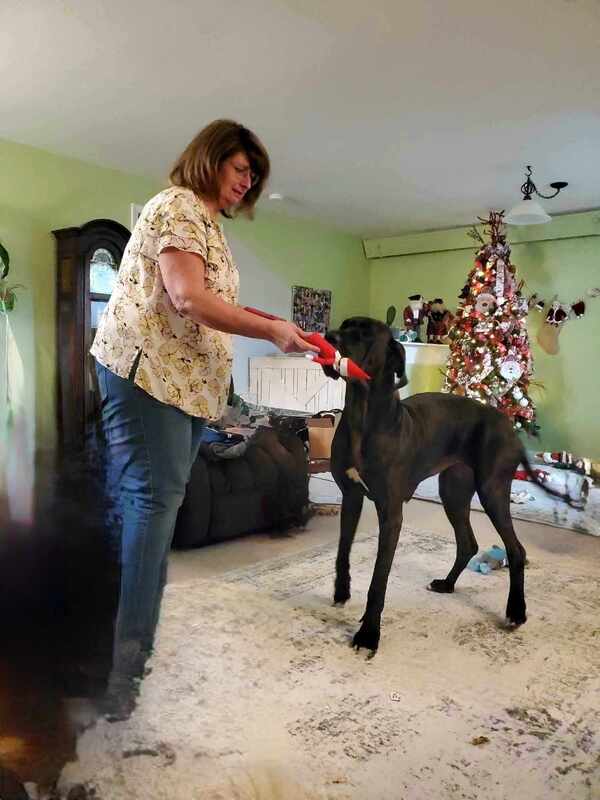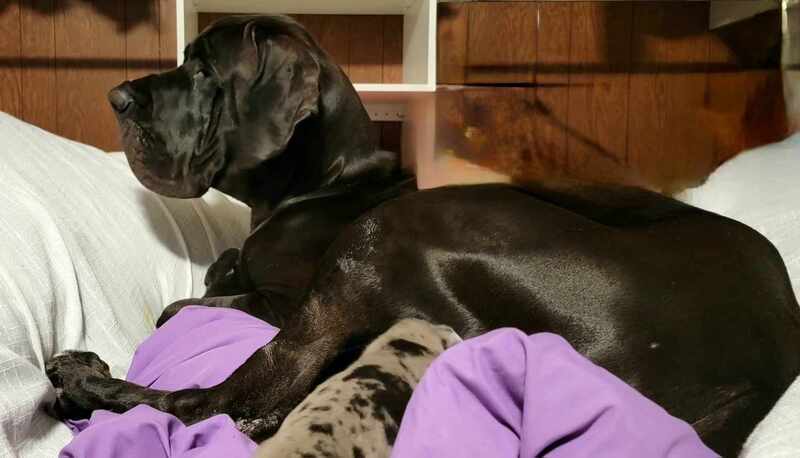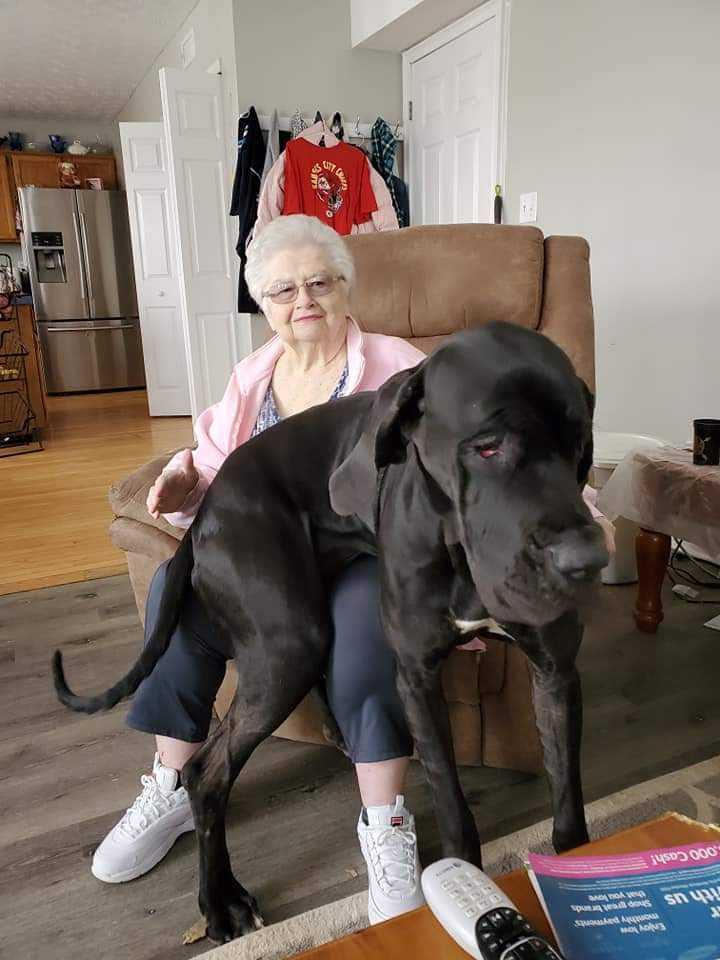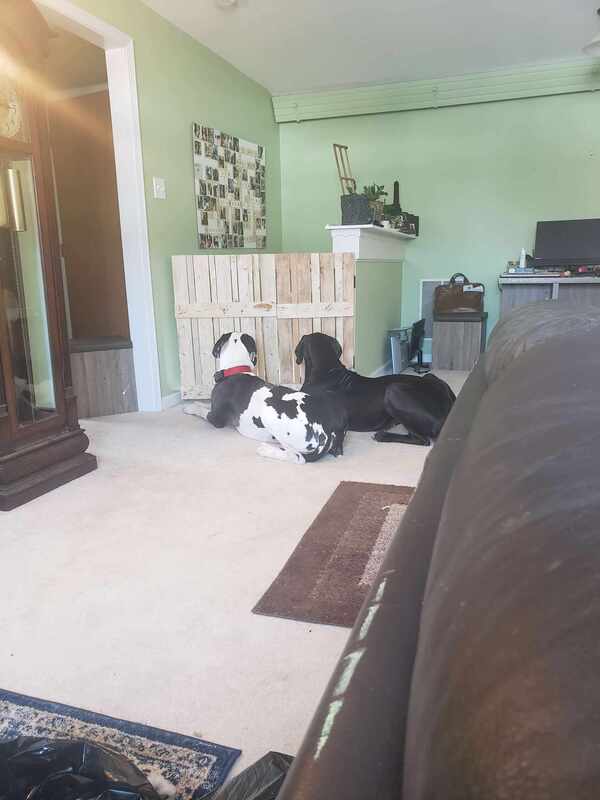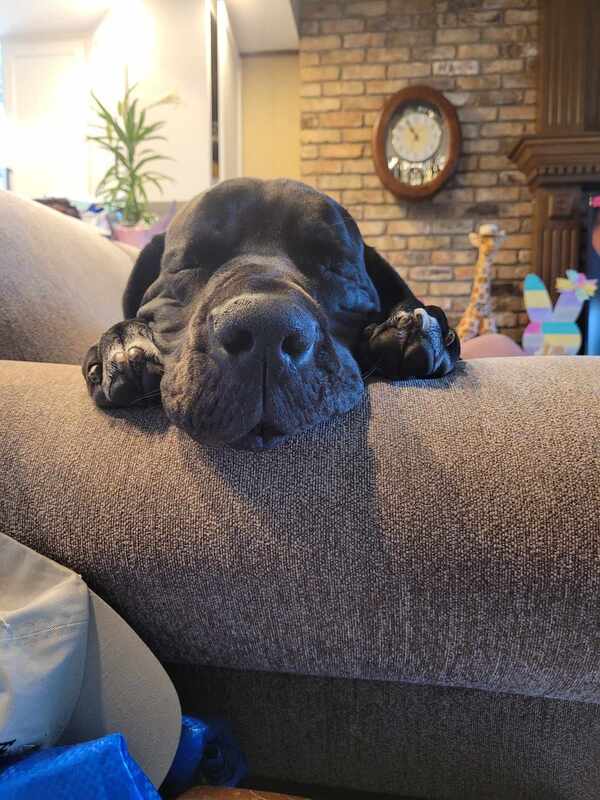- Care;
- Despite his giant size, a Great Dane is mellow enough to be a good housedog, though he's not well suited to a tiny apartment because he'll knock into everything.
He can get cold in the winter, so he shouldn't be left outside in colder climates — but then no dog should. In fact, he would enjoy having a sweater or fleece coat to keep him toasty warm when you go for a walk in a winter climate.
He's relatively quiet indoors, but he needs a long walk at least once a day, or a large yard to play in. An adult Great Dane needs 30 to 60 minutes of daily exercise, depending on his age and activity level. Puppies and adolescents need about 90 minutes of exercise a day.
If you plan on keeping him in a yard occasionally, he'll need a six-foot fence, though he's not a jumper. If you're a gardening fan understand that he really enjoys destroying the landscaping (just a little safety tip in hopes of preventing human heart attacks).
While you may want a running partner, wait to take your Great Dane jogging until he's at least 18 months old. Before then his bones are still growing, and they're just not up to the task. In fact, he may not be ready to go jogging until he's two.
Crate training benefits every dog and is a kind way to ensure that your Great Dane doesn't have accidents in the house or get into things he shouldn't. A crate (a really big one) is also a place where he can retreat for a nap. Crate training at a young age will help your Dane accept confinement if he ever needs to be boarded or hospitalized.
Never stick your Dane in a crate all day long, however. It's not a jail, and he shouldn't spend more than a few hours at a time in it except when he's sleeping at night. Great Danes are people dogs, and they aren't meant to spend their lives locked up in a crate or kennel.

